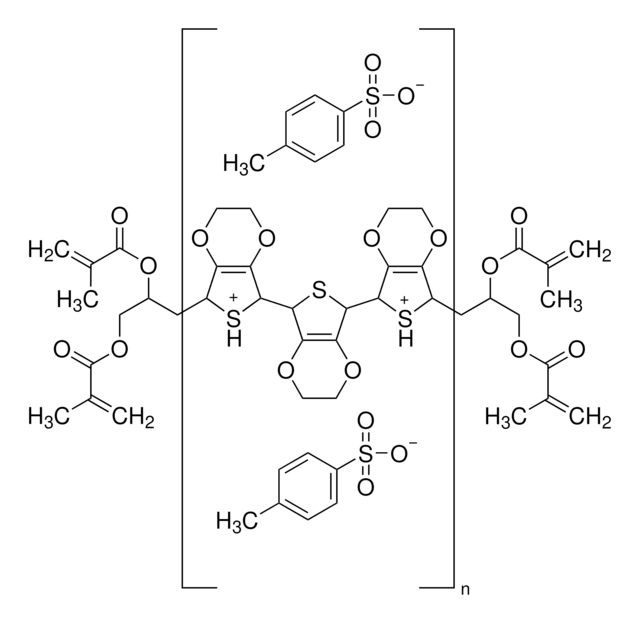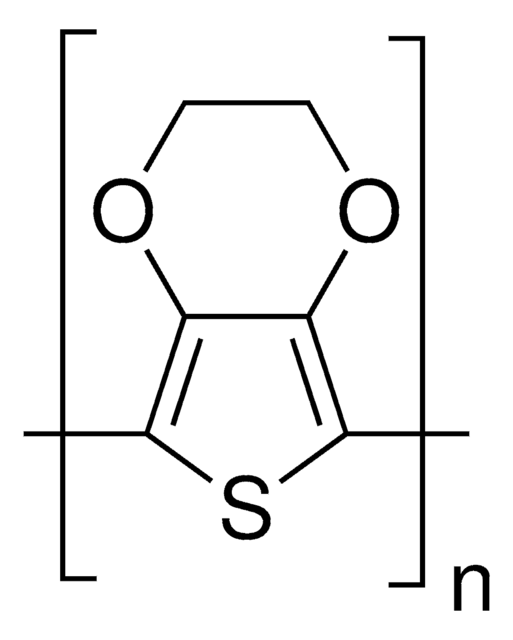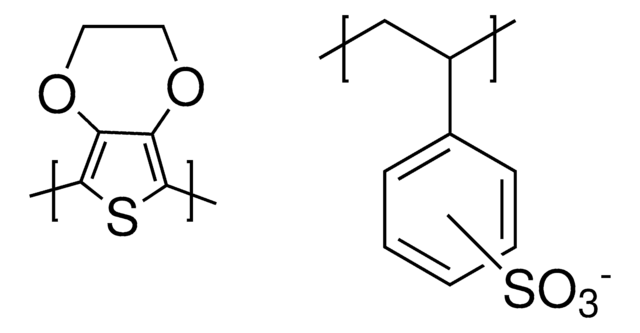Kluczowe dokumenty
649805
PEDOT, block PEG
solution, 1 wt. % dispersion in nitromethane, contains perchlorate as dopant
Synonim(y):
Aedotron™ C-NM, PEDOT-block-PEG, PEDOT-b-PEG
About This Item
Polecane produkty
Nazwa produktu
Poly(3,4-ethylenedioxythiophene)-block-poly(ethylene glycol) solution, 1 wt % dispersion in nitromethane, contains perchlorate as dopant
zawiera
perchlorate as dopant
Poziom jakości
stężenie
1 wt % dispersion in nitromethane
opór
10,000-100,000 Ω/sq (spin cast thin films: typically 1-3 layers spun at 1,000 rpm)
praca wyjścia
4.33 eV
opis
40 nm (RMS roughness spin cast thin films)
wielkość cząstki
600-1000 nm (in suspension)
przewodność
0.1-5.0 S/cm (bulk)
gęstość
1.127 g/mL at 25 °C
Szukasz podobnych produktów? Odwiedź Przewodnik dotyczący porównywania produktów
Opis ogólny
Zastosowanie
Przestroga
Informacje prawne
Hasło ostrzegawcze
Warning
Zwroty wskazujące rodzaj zagrożenia
Zwroty wskazujące środki ostrożności
Klasyfikacja zagrożeń
Acute Tox. 4 Inhalation - Acute Tox. 4 Oral - Carc. 2 - Flam. Liq. 3 - Repr. 2
Kod klasy składowania
3 - Flammable liquids
Klasa zagrożenia wodnego (WGK)
WGK 2
Temperatura zapłonu (°F)
96.8 °F - closed cup
Temperatura zapłonu (°C)
36 °C - closed cup
Wybierz jedną z najnowszych wersji:
Masz już ten produkt?
Dokumenty związane z niedawno zakupionymi produktami zostały zamieszczone w Bibliotece dokumentów.
Klienci oglądali również te produkty
Produkty
New conducting and semiconducting polymers for plastic electronics
The application of conducting polymers at the interface with biology is an exciting new trend in organic electronics research.
Nasz zespół naukowców ma doświadczenie we wszystkich obszarach badań, w tym w naukach przyrodniczych, materiałoznawstwie, syntezie chemicznej, chromatografii, analityce i wielu innych dziedzinach.
Skontaktuj się z zespołem ds. pomocy technicznej







